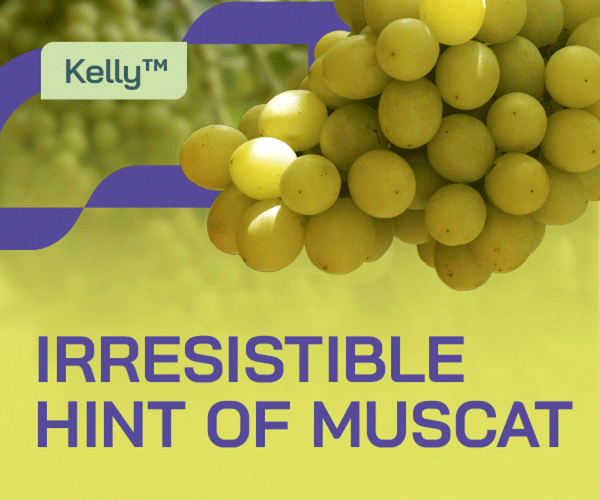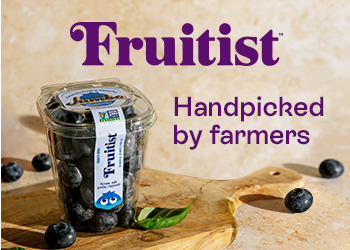Europe's School Fruit Scheme makes big impact on kids and families

Since it began in 2009, the European Commission's (EC) School Fruit Scheme has spread to 55,000 schools and eight million children, in all but three member states. Common Agricultural Policy (CAP) reforms contemplate raising the commission's co-financing contribution by €60 million (US$78 million), at a time when economic crises have forced budget cutbacks in many areas. At www.freshfruitportal.com we speak with the European Fresh Produce Association's (Freshfel) Raquel Izquierdo de Santiago about the positive impacts the initiative has had on fruit and vegetable consumption. 
While EC documents state it is too early to draw "definitive conclusions" about the scheme, evaluations show it has been successfully embedded in participating countries, with strong potential to improve the eating habits of both children and parents.
"The numbers are really impressive, especially if we think about the economic situation and the fact that member states are cutting budgets for different things," says Izquierdo de Santiago, who leads Freshfel's food law, nutrition and health division.
"The way it works is the European Commission co-finances part of the program. It depends on the number of kids in each member state and what their economic development is, but it basically covers 50% of the budget that goes to the program.
"At present, that means that the European Union is investing 90 million euros per year, and this is matched by funding from the European member states."
She says the remaining funds can either come from the government or the private sector, with a lot of produce companies either giving fruits and vegetables to kids or taking part in the EC's compulsory accompanying measures, which are proposed for each budget and can include such initiatives as farm visits, teaching materials, games and interactive websites.
She mentions only Finland, Sweden and the U.K. decided not to take part in the scheme.
"The U.K. does have a program in schools so they just preferred to keep it at the level of national control, rather than joining the E.U. scheme," she says.
To avoid confusion around the program's name, she emphasizes that it also includes vegetables.
Diversity across the continent
The way countries implement the program varies greatly. The EC has recommended a diversity of 5-10 different products to keep children interested, but mentions this may be difficult to follow in states with a preference for local or seasonal produce.
For instance, Slovenia prefers fruit and vegetables from integrated or organic production while the German state of Baden Wurttemberg only purchases fresh produce "in order to teach children everyday food preparation skills such as rinsing and chopping". Elsewhere, the Romanian program has a strict focus on apples.
Izquierdo de Santiago highlights the biggest beneficiaries for the 2013-14 year will be Italy (€20.5 million), Poland (€13.6 million) and Germany (€12 million).
"It is interesting to know which ones use the most, but it goes hand in hand with the populations they have."
Poland's 2013-14 represents a 48% rise, while others countries who are set to significantly increase their EC produce funding intake include Bulgaria, Lithuania and Hungary.
Romania was the third-largest recipient in 2012-13, but its EC financing will fall by almost 50% to €4.9 million. However, this is still higher than funding for Spain and France, which have more than double and triple Romania's population respectively.
On a per capita basis, the biggest beneficiaries include Hungary, Latvia, Lithuania, the Czech Republic, Slovakia, Poland and Italy.
New European Union entrant Croatia will also benefit from the program with €1.1 million in 2013-14.
In contrast to U.S.' fast-moving Let's Move! Salad Bars 2 Schools campaign, the European scheme actually runs seperately from the canteens.
"That's done on purpose because what they wanted with the program is to actually bring attention to the fruit and vegetables – it was not meant to just improve the menus in the canteens," says the Freshfel director.
"It's mostly done in terms of a snack, in the morning or the afternoon – it depends on the country. The idea is that it’s an event that’s aside from their normal canteen experience, and to have the accompanying measures, however there is no standard."
On a cultural level, she says the program has led to increased fruit and vegetable consumption within families.
"The kids bring home the learning from the program and they motivate their parents and extended family to consume more," she says.
"So in that sense, as we believe that the motivation for the program was basically increasing the consumption of the healthy part of the diet, this needs to stay."
Proposals for growth
She highlighted the EC's proposal to raise the School Fruit Scheme budget to €150 million was now in the hands of the European Parliament and the European Council.
"It's another big signal that they're giving it the importance it deserves - the ncreased budget actually has the objective on the one hand to increase what is co-financed by the European Union, because at present the part that is co-financed is the running of the program but not the accompanying measures, which are nevertheless compulsory.
"It will serve so that the European Union is also involved in co-financing the accompanying measures. That's a big point because as they are a compulsory part of the program, some member states are finding it more difficult to get the part of the co-finance to cover the accompanying measures.
"What we expect is that if the budget gets increased and therefore the European Union will have more of a say in the accompanying measures, this will also serve to analyze what are the best practices and what accompanying measures are the most effective."
Related stories: Salad bars in schools bring "empowerment" to U.S. kids
European produce consumption "stagnating", Freshfel report shows
Photo: European Commission







































